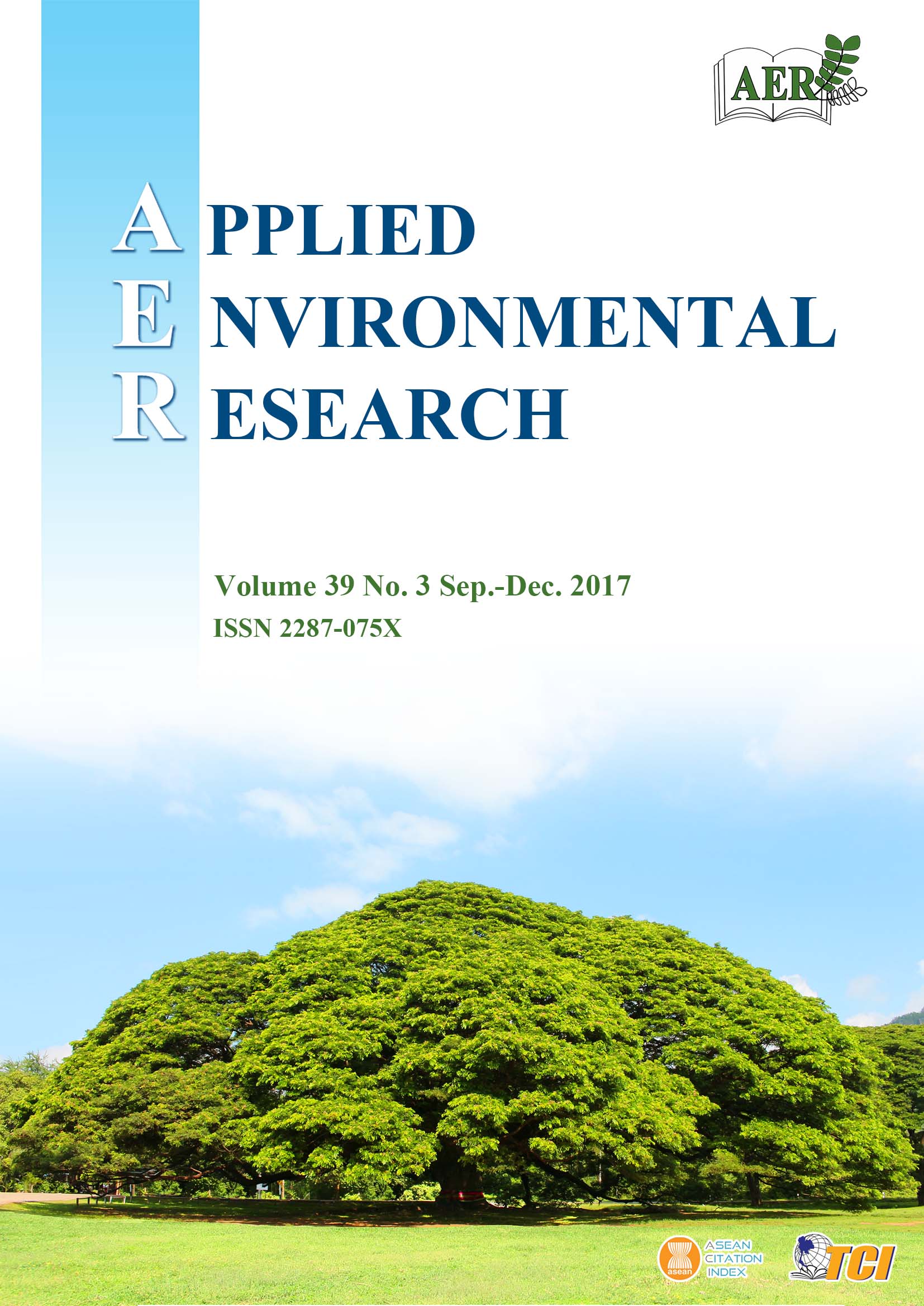Preliminary Study of Color Removal from Moh Hom Dyeing Wastewater Using a Low Cost Activated Carbon Derived from Pineapple Waste
Main Article Content
Abstract
In Northern Thailand, the folk dress of the culture can still be seen in everyday use, properly called "Moh Hom". The production of Moh Hom is undertaken by small-meduim enterprises (SMEs), which are not subject to regulation to control environmental management. The Moh Hom fabric dyeing produces blue-colored wastewater which is typically discharged untreated into natural waterways, causing water pollution. Activated carbon adsorption offers an interesting option for on-site wastewater treatment for colour removal. Pineapple waste is a widely-available and free source of activated carbon in Chiang Rai Province, Northern Thailand. The current study examined the adsorption characteristics of pineapple leaf activated carbon (PAAC). The adsorption data are correlated with Langmuir, Freundlich and Temkin models under various conditions such as dye concentration and contact time. The study found that PAAC absorbed Moh Hom adsorption in a short time (30-60 min) with the highest adsorption capacity of 234 mg g-1. The adsorption was identified as physical adsorption using the assumption of Temkin’s model. The adsorption capacity of PAAC was found to be higher than commercially-available powdered activated carbon around 36 %. The study indicates that PAAC offers a cost-effective alternative to commercially available activate charcoal for removing blue dye from Moh Hom dyeing wastewater streams. Its adsorption capacity is comparable to that of commercial activated carbon, whilst also being cheaper, more eco-friendly and supports agricultural waste utilization.
Article Details

This work is licensed under a Creative Commons Attribution-NonCommercial 4.0 International License.
Published articles are under the copyright of the Applied Environmental Research effective when the article is accepted for publication thus granting Applied Environmental Research all rights for the work so that both parties may be protected from the consequences of unauthorized use. Partially or totally publication of an article elsewhere is possible only after the consent from the editors.

